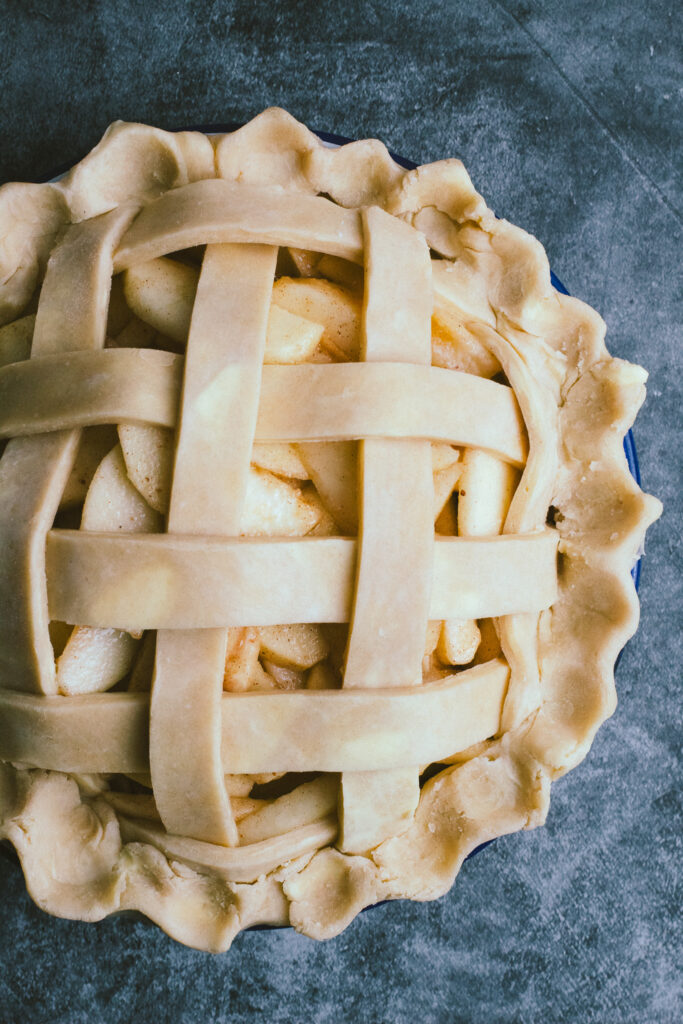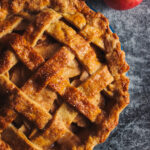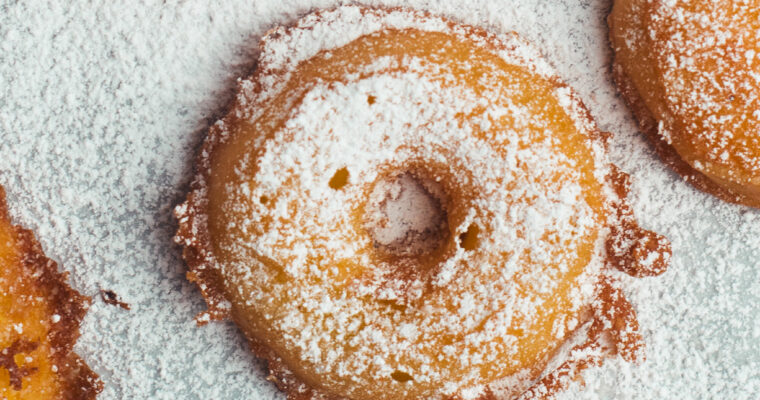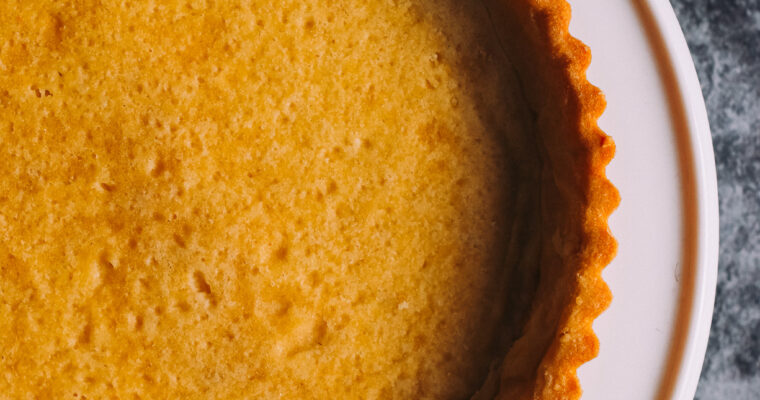Knowing how to make a pie crust is essential in any home cook’s arsenal, especially knowing how to make a pie crust without a food processor. Good technique and a few basic tips and you will be well on your way to perfecting pie crust at home…
Pie Crust Basics
When talking pie crusts, it helps to know some basics. A good pie crust is made up of a few simple ingredients – flour, fat, salt, water, and sometimes sugar. A good rule of thumb is to follow a 3:2:1 ratio of flour to fat to water.
- Flour – A good pie crust is made with a low protein flour. Low protein means low gluten. More gluten means a tougher crust.
- Salt adds flavour – without it, the crust will be bland plus it also helps to firm up the gluten and makes the dough easier to handle
- Sugar – Added for flavour and thought to help to encourage browning although I have found no difference.
- Fat – the choice is yours as to what fat you use. It coats the flour, inhibits gluten development, and gives your crust tenderness. Leaving small pieces of fat helps to create flaky layers by separating the long strands of gluten. Making a dough with these layers results in the fat melting and a flaky crust. The water content in the fat creates steam which enhances flakiness.
- Butter must be kept cold when making the crust. If it gets warm the water content can leak into the flour and make the crust tough. Butter gives a great flavour, whereas shortening has no water and makes the dough nice and pliable, easy to work with, and tender too.
- Water – binds the dough and brings all the dry ingredients together. Ice water is a good idea to keep the fat nice and cold.
Pie Crust Variations
- Eggs – can make a crust nice and tender and help to brown the crust. The extra fats added also help make the crust tender.
- Buttermilk/lemon juice/vinegar – sometimes added to help break down any gluten and give a tender crust, even when overworked. Using a tbsp can also help to prevent oxidation and is good to add if you are not using the dough straight away – stops it from turning grey.
How To Make Pie Crust Without A Food Processor
Making a pie from scratch is a great experience, but many recipes often call for a food processor to make the crust. However, fear not! You can still achieve a perfect homemade pie crust without the need for any fancy equipment. Follow these steps:
Mix dry ingredients – work in half of the fat first – this helps to coat the flour and stop gluten formation and ensure tenderness. Work with the prongs of a fork or a pastry cutter until a crumbly and coarse rubble-like texture develops.
Work in the remaining fat, tossing to coat in the flour. Leave larger chunks with smaller ones.
Add the water a tbsp at a time until it comes together. Try pressing between your fingers, it should just stick together and be damp – not soggy. If it doesn’t stick together, add 1 more tbsp of water.
Roll out the dough to a larger diameter than your dish, trying to roll in one direction only and quickly.
Roll the dough onto the rolling pin and line the pie dish. Greasing the pie dish beforehand can help to encourage browning of the outer crust and also to remove the pie once cooked. Cut away any excess and crimp the edges using your thumb and forefinger to pinch the dough. Follow your recipe for cooking times – this recipe is for a pie crust with an accompanying lid.
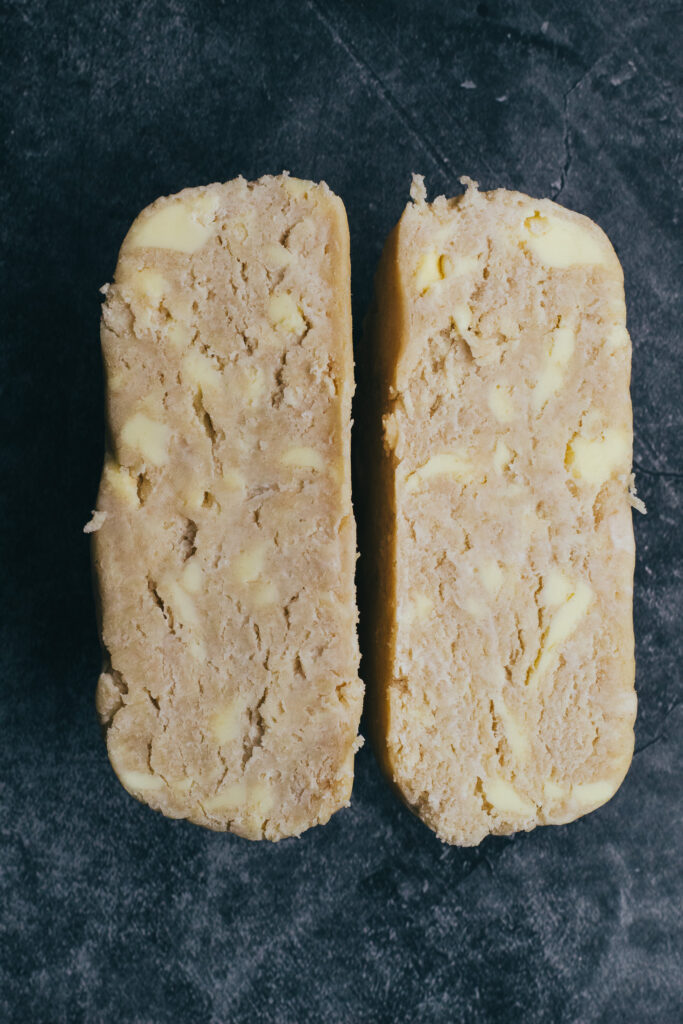
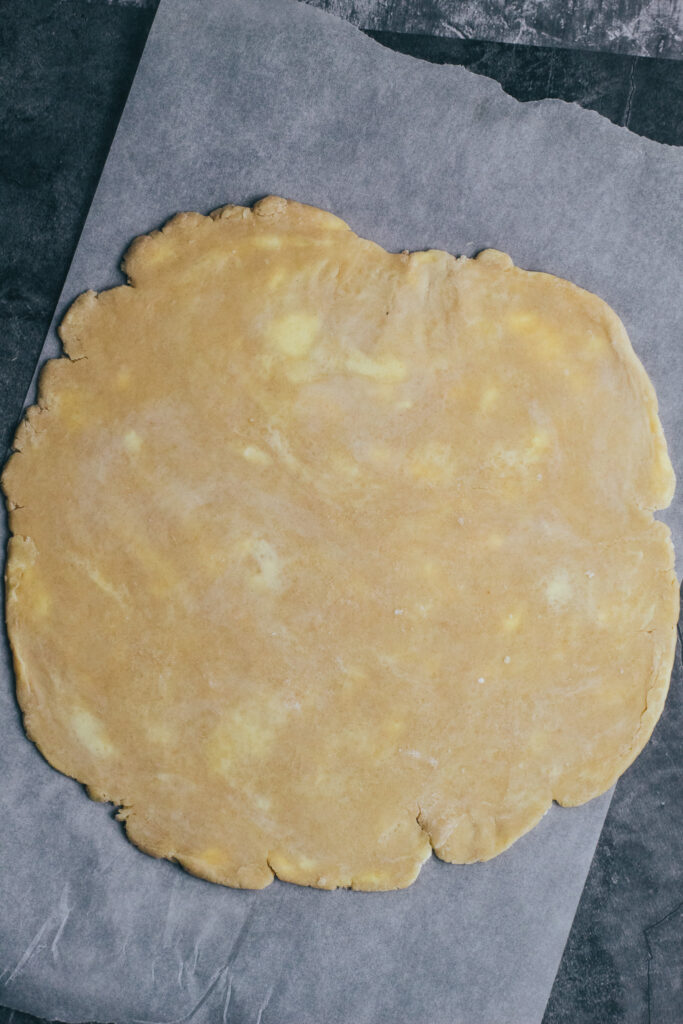
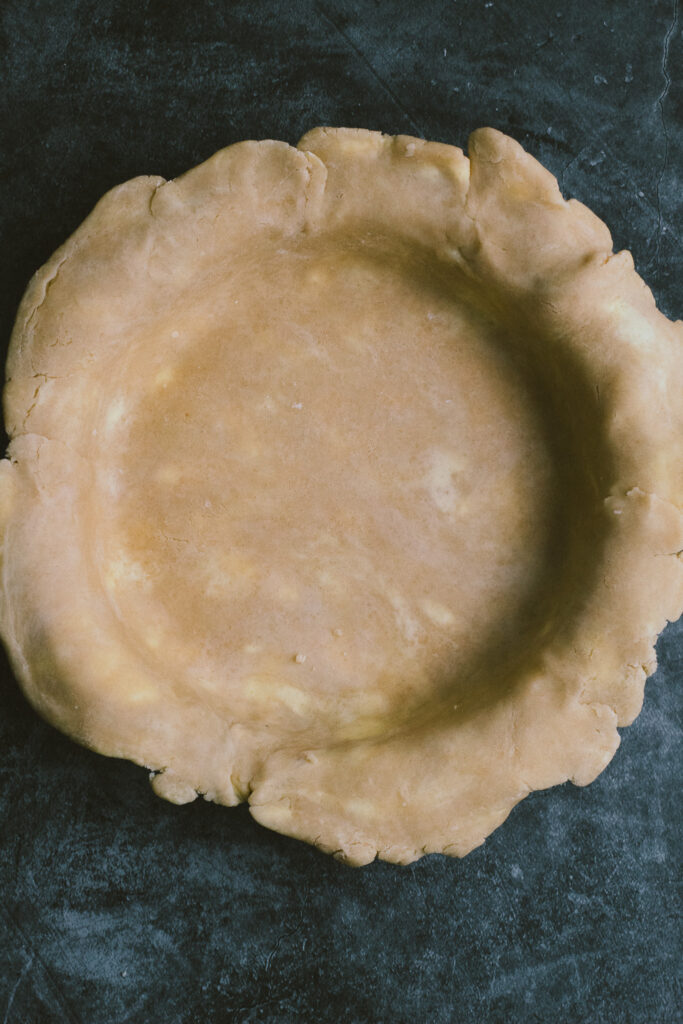
FAQ’s
This is usually because not enough fat is added to the crust and the ratio of fat to flour is wrong. Also, try not to overwork your dough.
This is due to not enough moisture in your dough. You need ice water to bind the flour and make a cohesive dough. Test the dough before rolling by squeezing a clump together and if it stays together it is moist enough. If not, add 1 more tablespoon of water and toss through the dough with a fork until it clumps together.
This is usually because the fat has been overworked into the flour and the fat wasn’t kept cold enough. Work in the fat using a pastry cutter or the prongs of a fork. This will avoid using your hands which can heat the butter.
Absolutely – pie crust freezes very well. Cover with cling film then tinfoil and freeze. Use within 3 months, defrosting overnight in the fridge before rolling out.
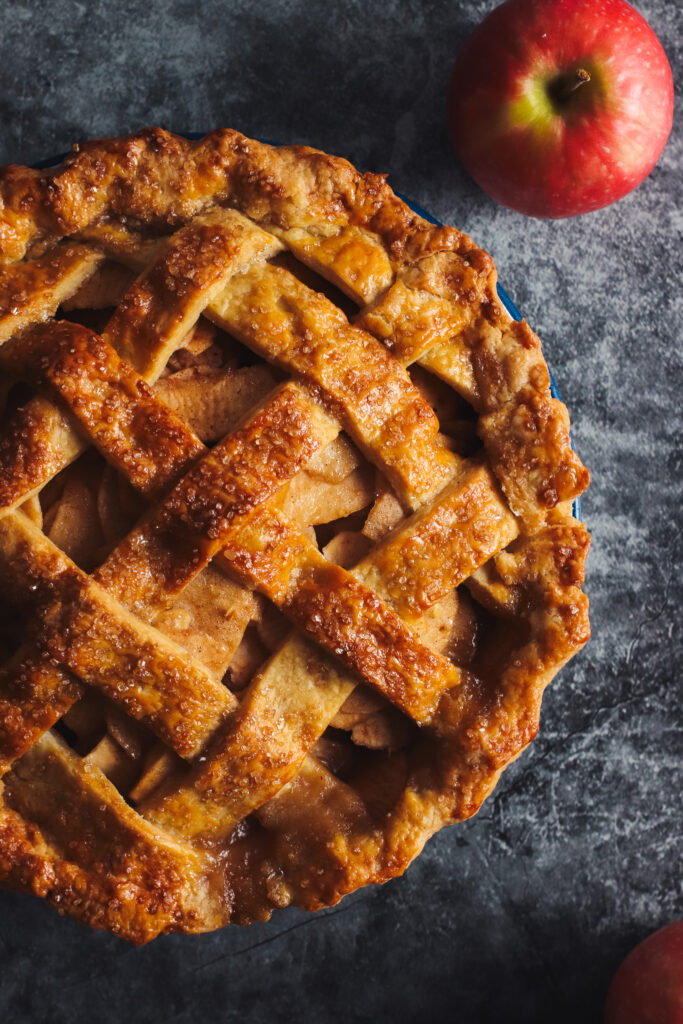
How To Make Pie Crust Without A Food Processor
Ingredients
- 350 g plain flour
- 1 tsp salt
- 1 tbsp sugar
- 125 g unsalted butter
- 125 g vegetable shortening
- 5-6 tbsp ice water
Instructions
- Begin by weighing out all your ingredients
- Chop your butter and vegetable fat into a 1cm dice
- Stir all the dry ingredients together
- Toss the butter and vegetable fat in the flour, then cut into the flour using a pastry cutter or the prongs of a fork until there are chunks of butter left in the dough
- Add water, a tablespoon at a time to the dough and stir. Continue to do this until the dough clumps together – around 5 -6 tablespoons
- Press a clump of dough together between your fingers. If it stays toegther, the dough is ready
- Bring the dough together into a ball and flatten it to a disc. Cover with cling film and chill for 2 hours before rolling out and lining your pie dish.
Try Another Recipe
If you are looking for a good shortcrust pastry recipe, try my recipe for pate sablee – a rich sweet and crisp pastry for all your tarts

